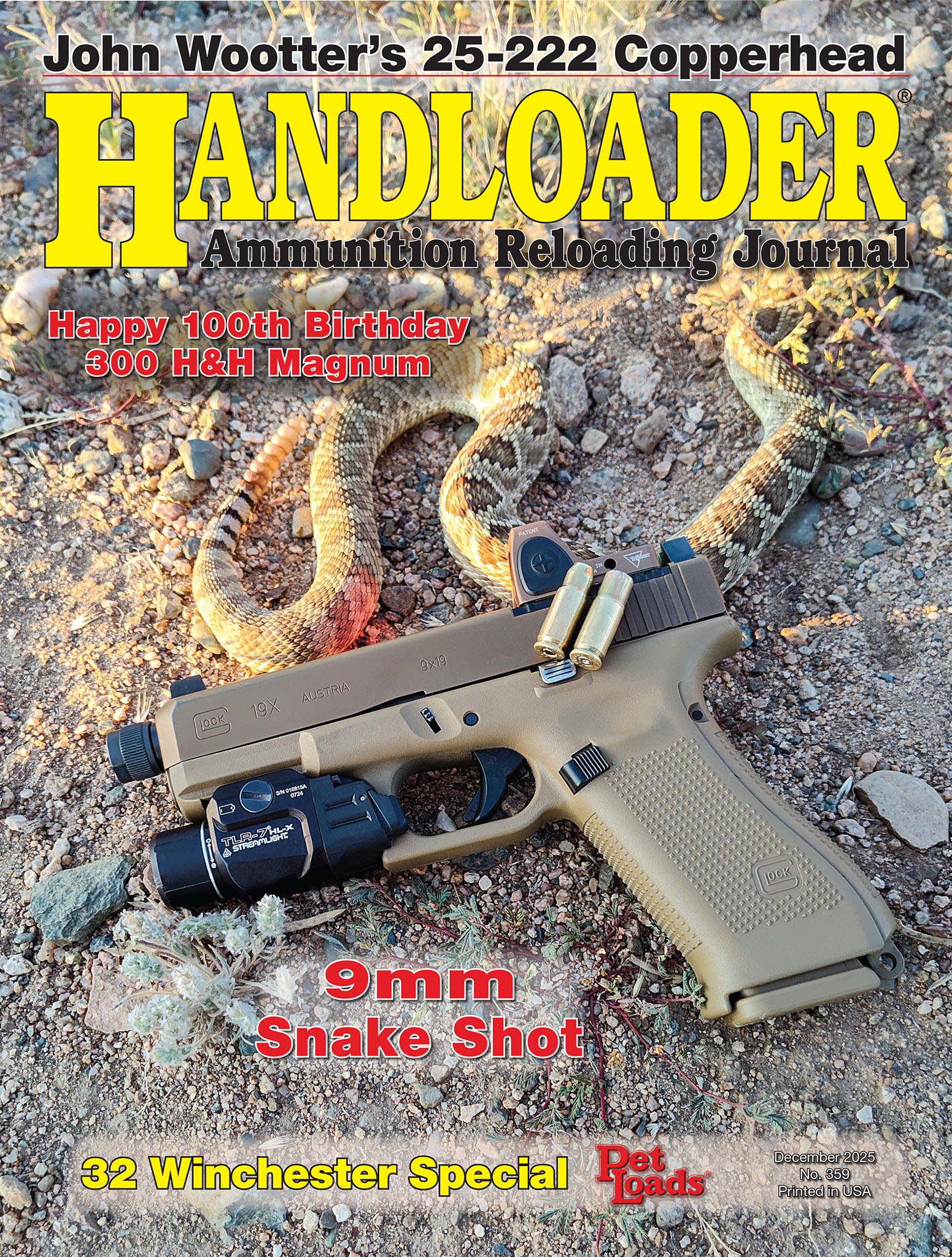The 7x57 Mauser started life as a smokeless military cartridge in 1892 and offered cutting-edge technology at that time. European companies soon offered elegant sporting bolt-action rifles that helped it become widely popular with sportsmen, hunters and target shooters.
While I admit to not choosing it often for my own hunting needs, I have used it several times and have respect for its many virtues. In fact, when my sons started to reach the age to begin deer hunting, I purchased three 7x57 rifles and started teaching them how to shoot at typical distances that Idaho mule deer are taken. The recoil was modest, and they could reliably place their shots, which is hugely important! Those rifles were used with great success on deer. The cartridge proved very reliable with my handloaded ammunition containing mostly Hornady and Nosler bullets.
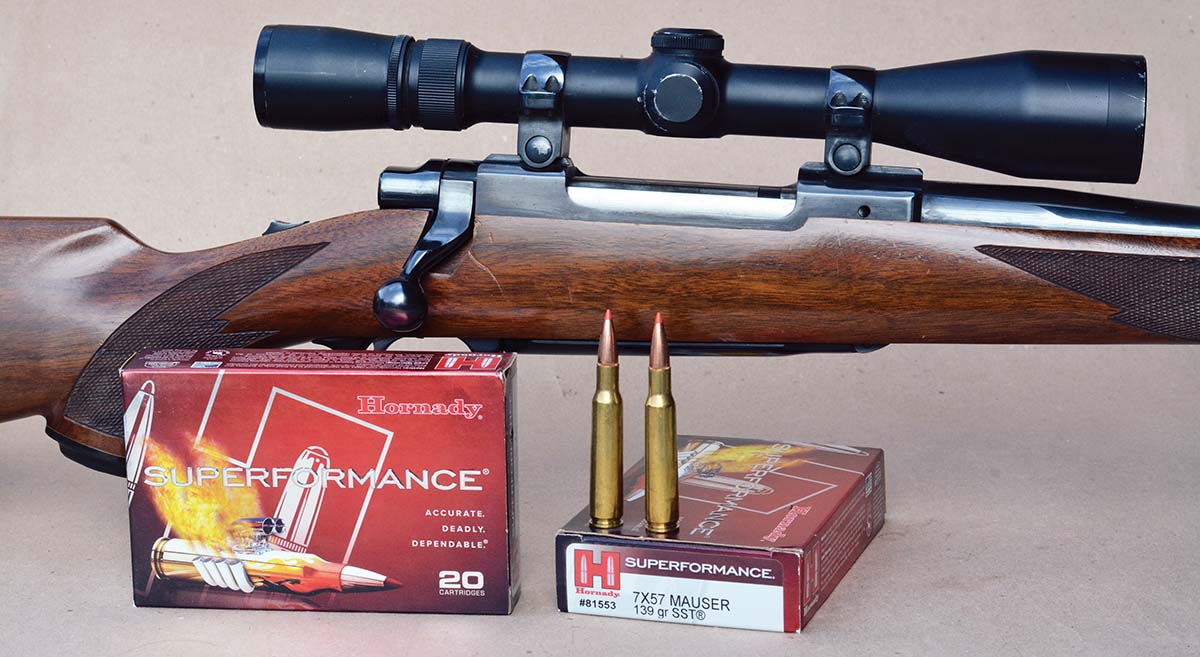
Hornady factory loads utilize the 139-grain SST bullet that works very well in modern U.S. manufactured rifles.
The 7x57mm is also known as the 7mm Mauser, 7x57, .275, .275 Bore and in more recent times is often referred to as .275 Rigby, which needs some clarification. Naturally, it is a 7mm caliber, with the groove diameter of foreign rifles usually measuring .285 inch; however, U.S.-produced rifles generally measure .284 inch (the bullet diameter used by all domestic bullet manufacturers). The bore or lands measure .275 inch and explains why it was often referred to throughout Europe as “.275 Bore” or just “.275.” It should be noted that Europe’s widely popular ammunition company Kynoch, as well as the fabulous gun maker Rigby, and other European manufacturers, labeled cartridges as “.275 Bore” or “7mm Mauser.” The point is that it does not appear to have ever been referred to as the “.275 Rigby.” However, today Hornady and Ruger offer ammunition and guns with that nomenclature. Regardless, it is a catchy name and has brought new attention to this 133-year-old cartridge.
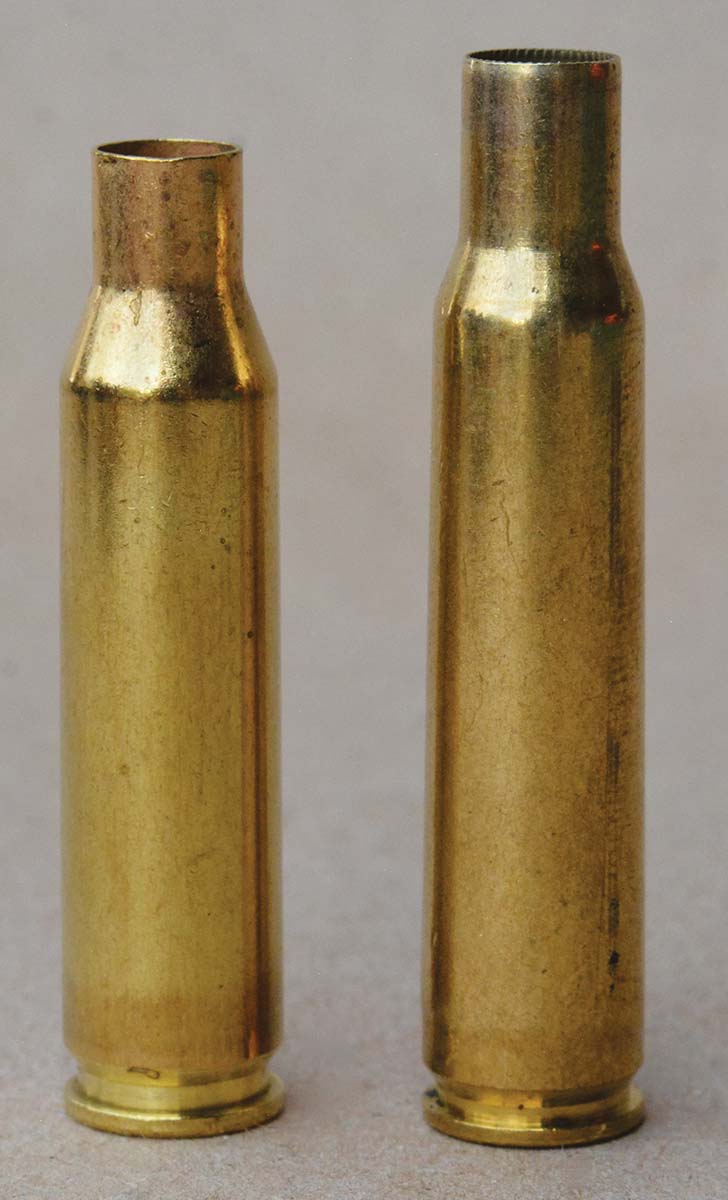
When the 7mm-08 Remington was introduced it was really a modernized version of the 7x57, but it could be housed in a short action rifle.
Paul Mauser developed the 7x57 by 1892 and brought the new cartridge and 1892 rifle (a transition model) to the Kingdom of Spain that same year. Spain quickly recognized the significant virtues of the cartridge’s high performance and immediately adopted it for their military. Its advantages became hugely apparent to U.S. troops and military brass during the Spanish-American War of 1898. U.S. troops numbered approximately 6,600 when they attacked the city of Santiago using Krag-Jørgensen rifles chambered in 30-40 Krag along with artillery and Gatling gun firepower. However, the Spanish troops only numbered about 750 and were armed with Spanish Mauser Model 1893 rifles chambered in 7x57 when they attempted to defend their positions on San Juan Hill and Kettle Hill. While they lost the battle, they managed to inflict heavy casualties against U.S. troops, with approximately 1,400 lives lost and many wounded. U.S. military brass quickly recognized the ballistic advantages of the 7x57 cartridge and almost immediately ordered the development of a new and improved cartridge to compete, which resulted in the development of the 30-03 (1903) and, with further improvements, became the 30-06 Springfield in 1906.
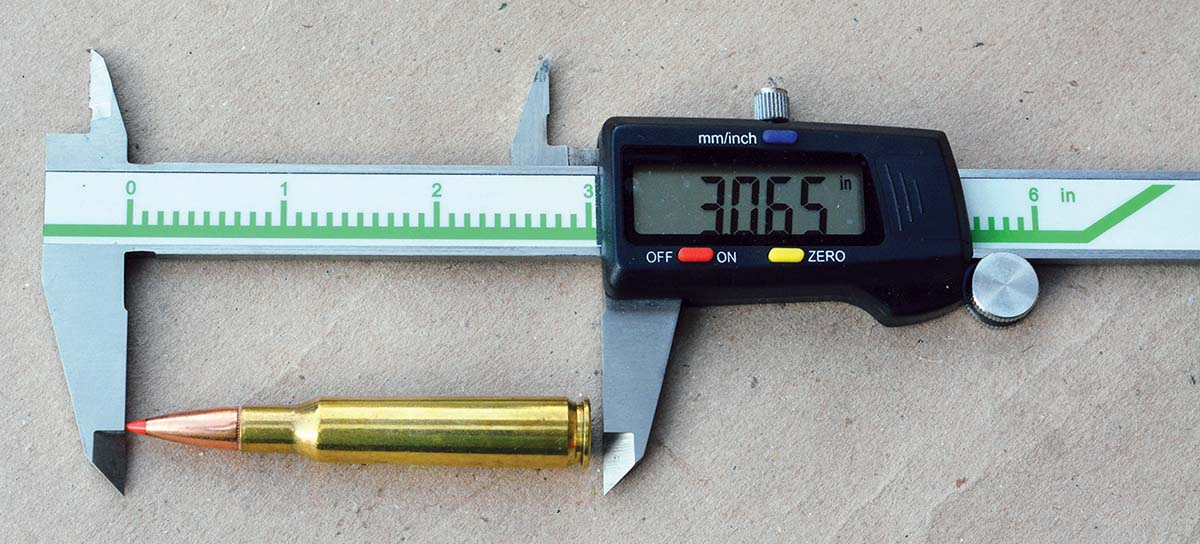
Maximum overall cartridge length is 3.065 inches.
In addition to Spain, many other countries adopted the 7x57 for military use, where it proved itself in many wars and skirmishes. Although its service years have long since passed, it remains popular with sportsmen and hunters.
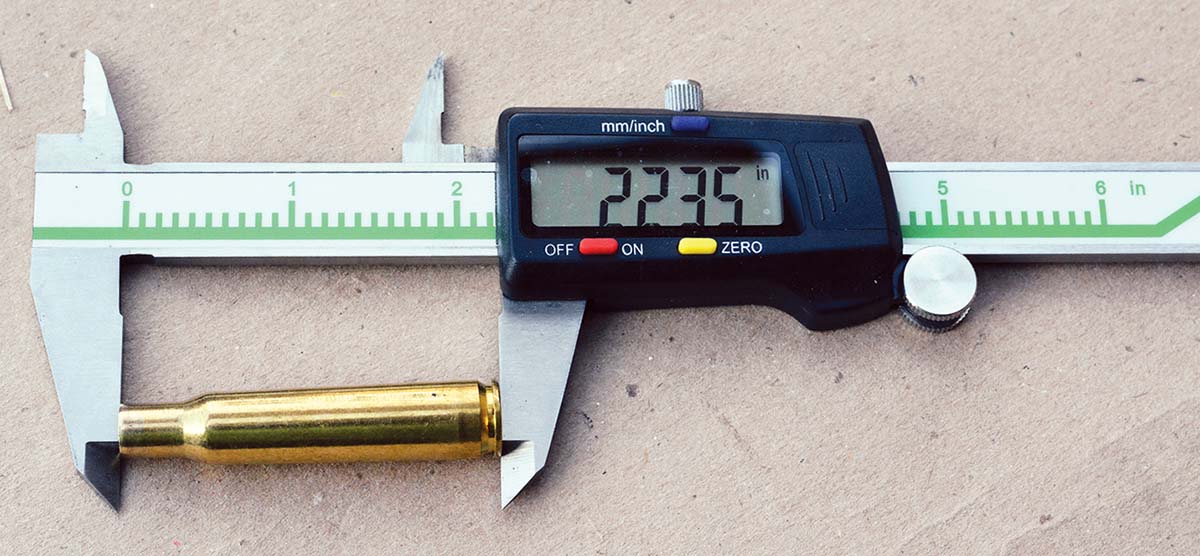
Maximum case length is 2.235 inches.
It should be mentioned that in 1980, when the 7mm-08 Remington was introduced commercially as a wildcat due to its popularity on silhouette target ranges, it was just a modernized 7x57 that could be housed in a short-action rifle. It measured 2.800 inches overall length compared to the 7x57 maximum overall length of 3.065 inches. The 7mm-08 is loaded to higher pressures at 61,000 pounds per square inch (psi), whereas the 7x57 has a maximum average pressure of 51,000 psi per SAAMI (Sporting Arms and Ammunition Manufacturers’ Institute) but more on that in a moment. Despite having less powder capacity, the 7mm-08 offers a 150 to 200 feet per second (fps) velocity advantage in factory loads, but at the cost of higher pressures. Clever handloaders can easily duplicate the 7mm-08’s performance with the 7x57. In fact, 7x57 cases generally hold 3.0 to 5.0 grains more water than the 7mm-08. If the two cartridges were loaded to the same pressures in modern rifles and with the same components, the 7x57 would produce greater velocities (more on that subject in a moment). In the field, the two cartridges perform similarly at normal hunting distances.

U.S. manufactured 7mm bullets measure .284 inch and correspond with domestic barrel specifications that measure .284-inch groove diameter. Most European barrels have a groove diameter of .285 inch and a .275-inch bore diameter.
The rimless case is based on the 8x57mm Mauser, although today there are some very small technical differences in the head. The case length is 2.235 inches, and the shoulder is 20.55 degrees (per the CIP – Europe’s equivalent of SAAMI). It should be noted that the 30-03/30-06 cartridges are based on the 8x57 Mauser case, making them and many other cartridges of the same family.
The original rifling twist was 1:8.66 inches; however, many European sporting rifles, such as the Mannlicher-Schoenauer, are fitted with a 1:9 twist. U.S. manufacturers use even slower twist rates, with Winchester using a 1:10 in the Model 70, while Ruger uses a 1:9.5 in the No. 1 and M77 rifles. These U.S. rifles will easily stabilize conventional cup and core bullets ranging in weight from 110 to 175 grains. However, some relatively new heavyweight low-drag bullets designed for fast twist barrels and ultra-long-range shooting will not stabilize properly.
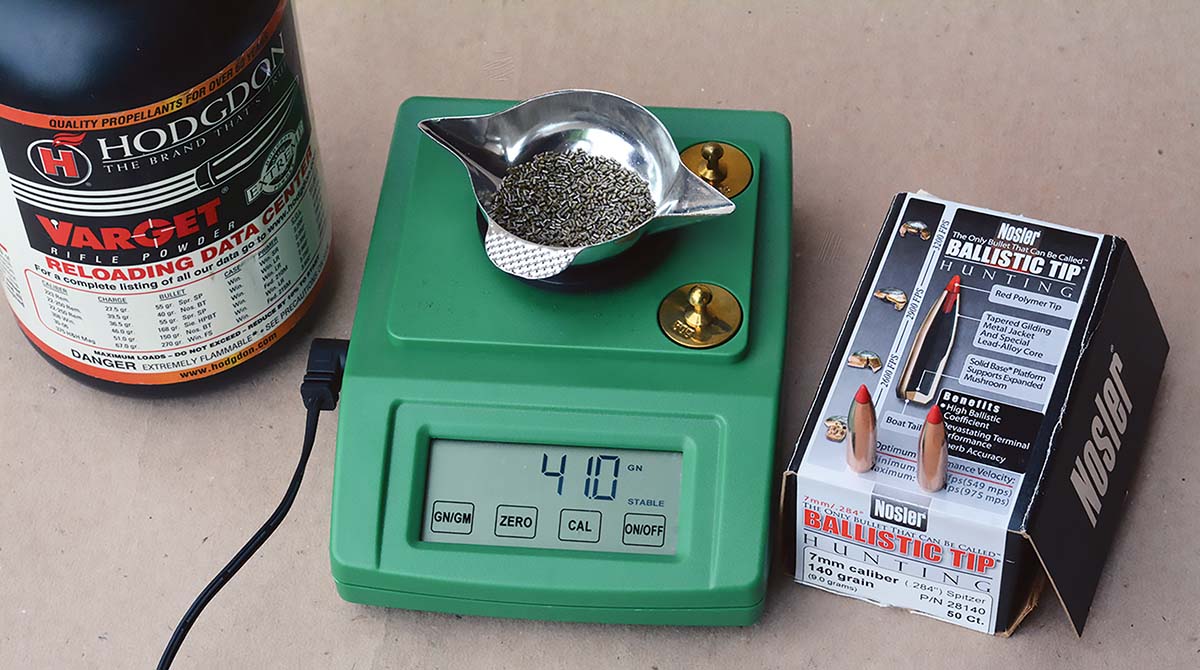
The 7x57 uses relatively modest powder charges that result in efficiency and long barrel life.
Notably, the earliest 7x57 military rifles were loaded with a 172.8-grain roundnose bullet at around 2,200 fps from a 23.2-inch barrel, with reports of 2,300 fps from the 29.1-inch barrel. By 1913, a Spitzer profile 138.9-grain bullet was adopted that offered around 2,789 fps from the 23.2-inch barrel. Soon, a 162-grain Spitzer boat-tail was adopted with a muzzle velocity of 2,461 fps. These two rather unusual bullet weights explain why Hornady chose 139 and 162-grain 7mm weights before so many other 7mm cartridges were developed, or in other words, they were specifically for the 7x57.
As indicated, SAAMI assigns a maximum average pressure for the 7x57 at 51,000 psi or 46,000 copper units of pressure (CUP); however, the CIP lists the maximum average pressure (MAP) at 56,565 psi, but currently, they do not list a CUP figure. It is probably just over 50,000 CUP. I have read many times in reputable reloading manuals and other sources that the reason for the low pressures by SAAMI is due to strength concerns of the early Mauser Models 1893 and 1895 rifles. I don’t believe that is true, as early European ammunition was loaded to 50,370 CUP and were proofed at 125 percent of that figure. As interest in the 7x57 began to grow, Remington began chambering their Rolling Block rifle.
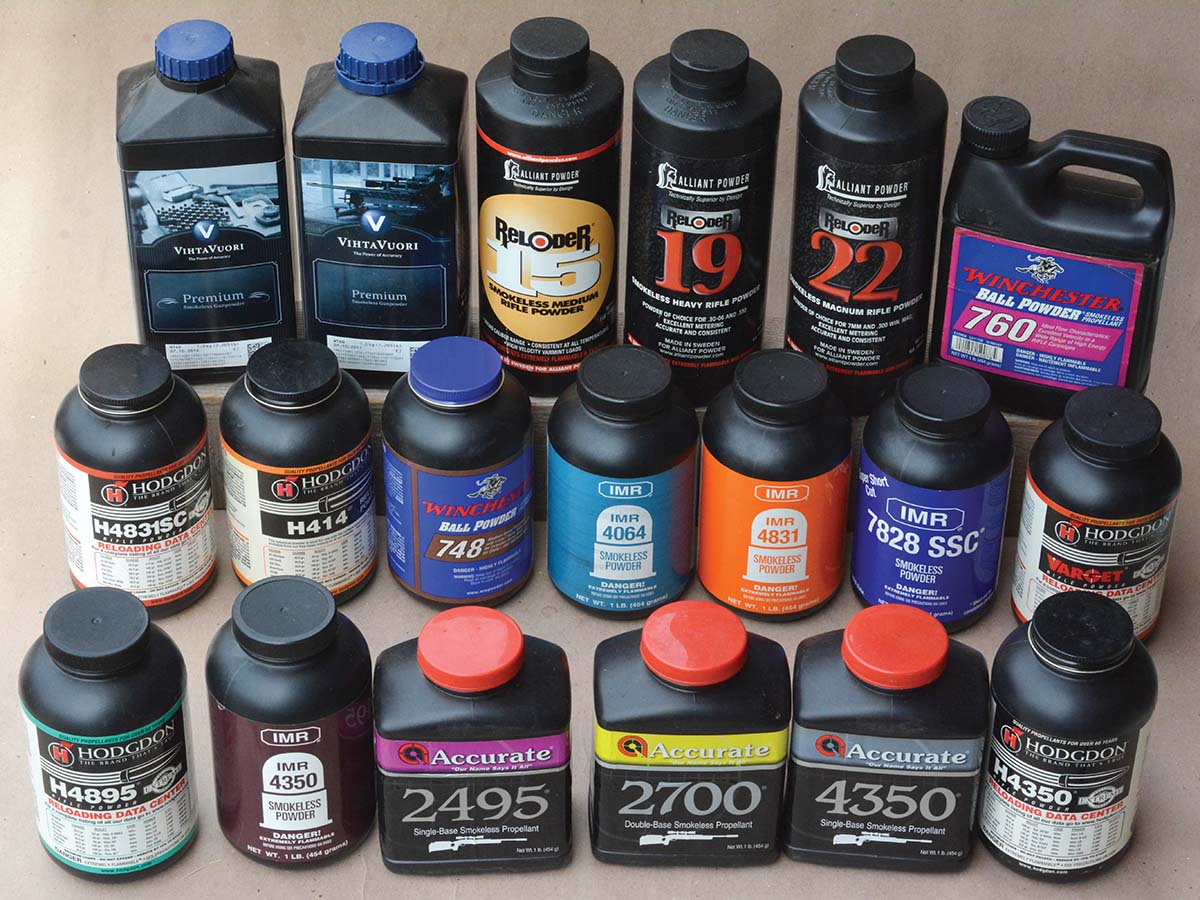
Brian used a variety of powders to develop Pet Loads data.
That is the weak rifle that has SAAMI concerned about European pressure levels! With that said, many Model 1893 and 1895 rifles have considerable wear, are in very rough condition, and may not even be safe with any loads. However, rifles in high condition are suitable for CIP pressure ammunition. If in doubt, have a qualified gunsmith inspect a given rifle prior to shooting.
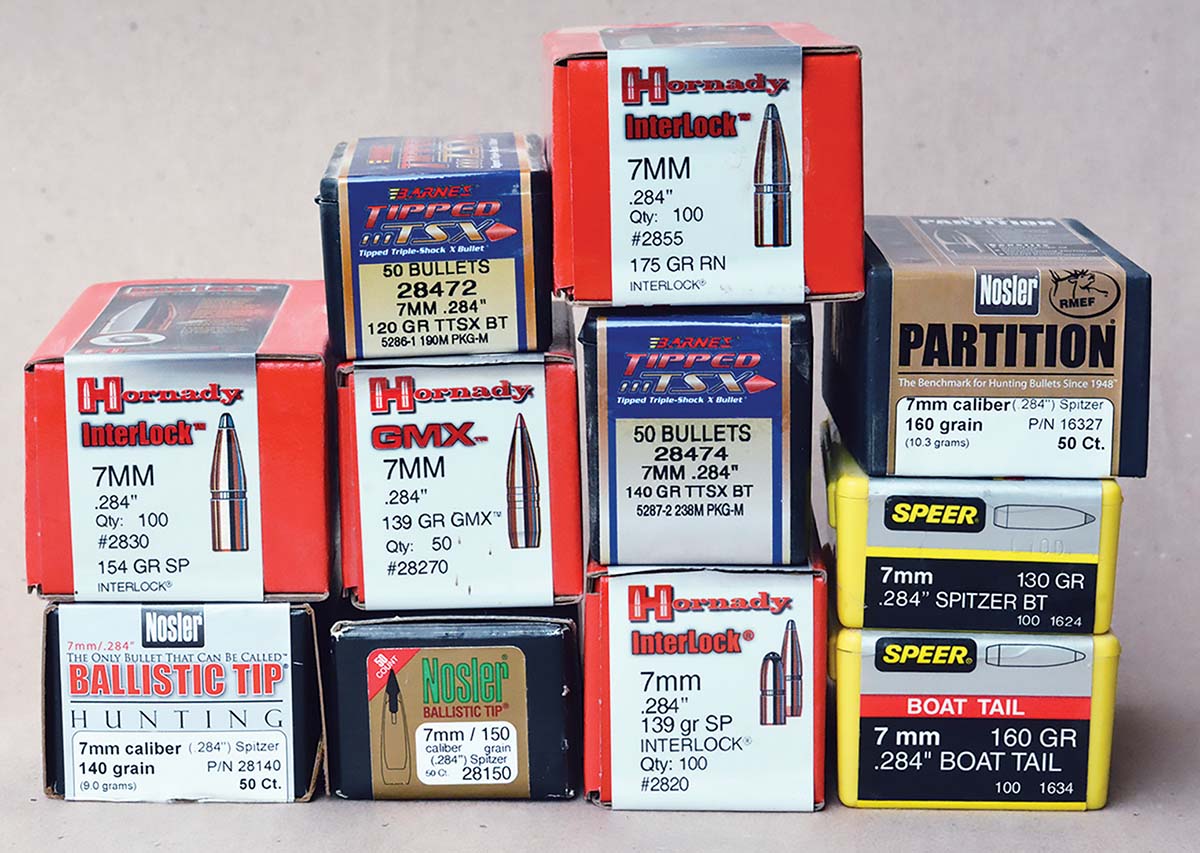
The 7mm bullet selection is broad.
In modern rifles, such as the Ruger M77, Winchester Model 70 and many others, including military rifles, handloaders can load cartridges that correspond with CIP pressure guidelines without concerns. In fact, the 7x57 can be loaded to the same pressure levels as the 7mm-08, but including that data today would complicate this article. The accompanying data is within the SAAMI guidelines. Since there are no +P pressure levels offered by SAAMI, I decided to also offer loads that are within CIP pressure limits of 56,565 psi and are identified accordingly. Incidentally, if you happen to own a Rolling Block rifle and plan to shoot it, it is suggested to use the starting loads and not increase powder charge weights even if there are no signs of excess pressure.
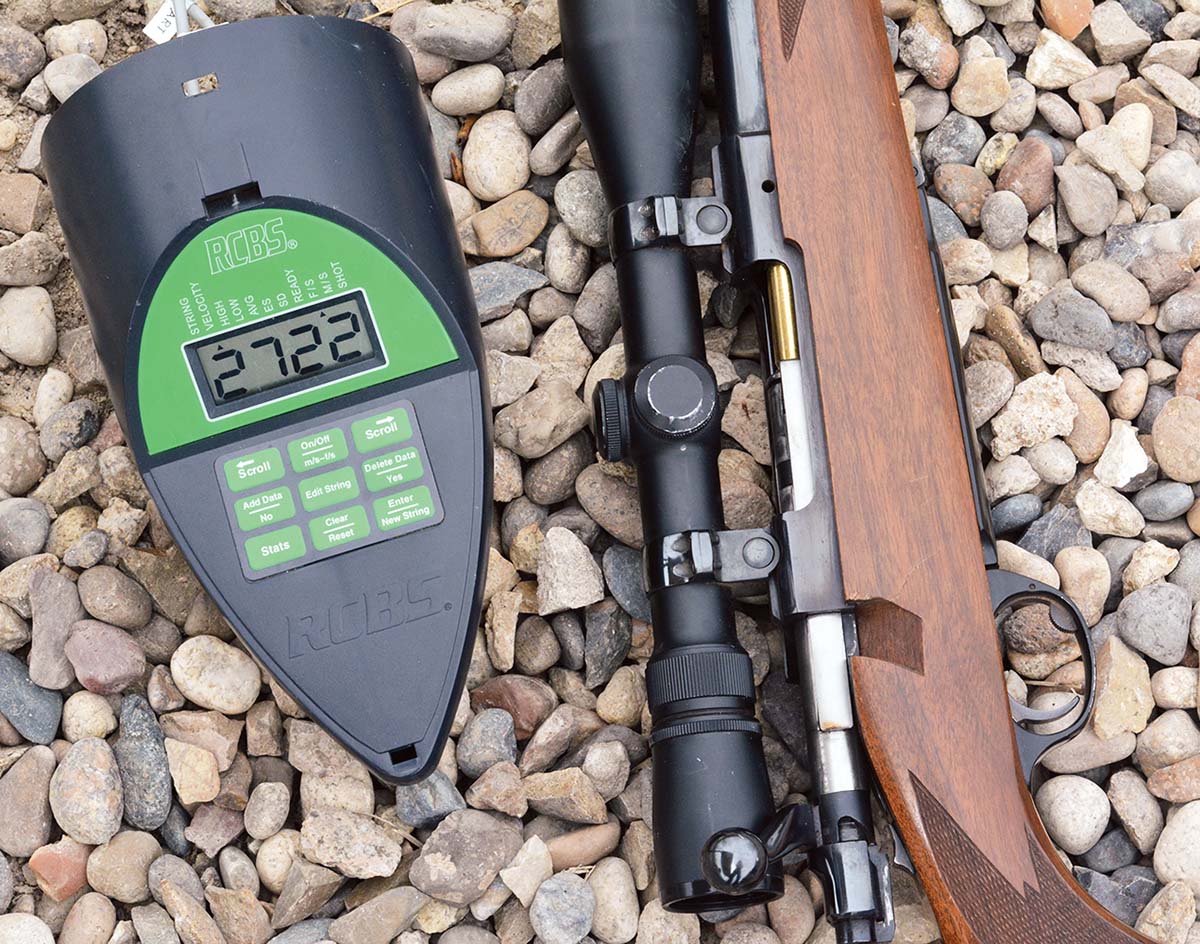
With a correct combination of components, the 7x57 displayed low extreme spreads and good accuracy.
Before proceeding, it seems prudent to mention that the 7x57R (indicating “rim”) was designed for break-action single-shot, drilling, cape guns, etc., to facilitate easy extraction. The case is notably thinner in the web area, and it should not be used in conjunction with the accompanying 7x57 data. Many break-action rifles cannot handle the pressures and case head thrust that a rugged bolt-action rifle can. Generally, loads for this cartridge should be limited to 40,000 to 41,000 CUP.
A very good selection of factory loads from Federal, Hornady, Nosler, Remington, Winchester and others utilizes bullets from 139- through 175-grain weight. However, the 139- and 140-grain bullets pushed to around 2,660 fps are the most popular. It is noteworthy that years ago, when Hornady offered their Light Magnum product line, the 139-grain SST bullet was listed at 2,830 fps, which can be duplicated by handloading. Today, Hornady lists the Superformance load with a 139-grain SST bullet at 2,760 fps. Many early rifles will have long throats to accommodate the long, 172.8-grain roundnose bullet. Federal lists a 175-grain roundnose soft point at 2,390 fps, often giving the best accuracy in period rifles.
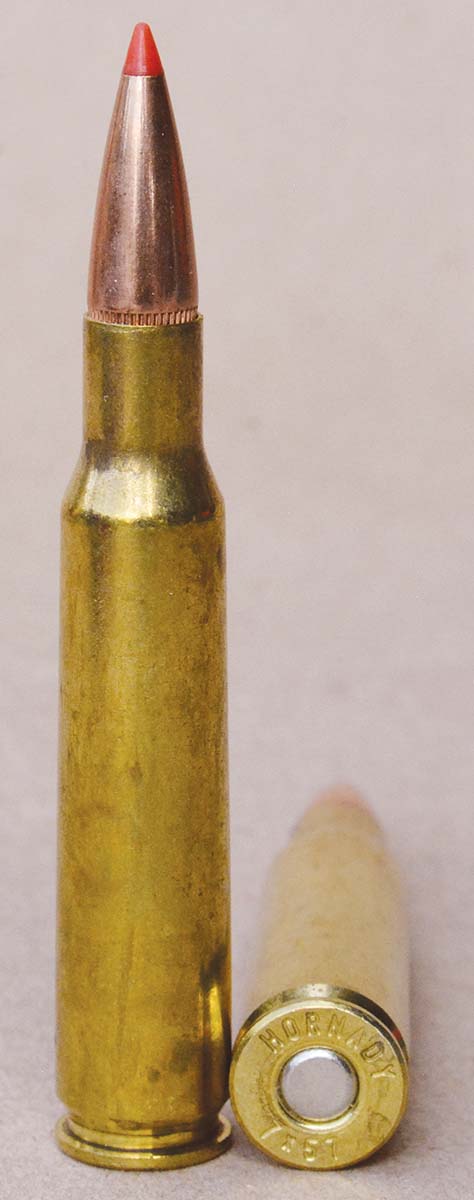
The 7x57 was developed in 1892 and was a cutting-edge design at that time.
The 7x57 has become a notably better hunting cartridge with the development of modern bullets. For most deer and antelope hunters, premium bullets that typically weigh between 139 and 150 grains are excellent choices, as they can be pushed to 2,850 fps and 2,750 fps, respectively, and offer a reasonably flat trajectory at normal distances. Examples include the Hornady SST, Nosler Ballistic Tip, AccuBond and others. For those that may use it on black bear, elk, moose, African plains game or similar tougher or heavier animals, the 140-grain Barnes Tipped Triple Shock X-Bullet, 150- and 160-grain Nosler Partition and AccuBond, Hornady ELD-X and others that offer desirable penetration qualities should be selected.
As indicated, there are significant differences in the throat lengths of rifles from different eras and manufacturers. Hornady still offers their 175-grain roundnose softpoint bullet that will generally give the best accuracy in period military rifles.
The 7x57 thrives on the same powders that perform best in the 30-06 and other cartridges that have a similar powder capacity to bore ratio. As a result, powder options are huge. A few that offered outstanding performance include Varget, H-4895, H-4350, H-4831, Hybrid 100V, Reloder 15, Reloder 16, Reloder 19, IMR-4064, IMR-7828ssc, IMR-4350, IMR-4955, W-760, StaBALL 6.5, A-4350, A-2700, A-2495, A-4350 and many others.
Besides being historical, the 7x57 is an excellent cartridge that has stood the test of time. It offers a unique blend of power, performance, modest recoil, long barrel life and accuracy. While many older cartridges rarely get much press in recent years due to the flood of new cartridges, the 7x57 can still deliver.
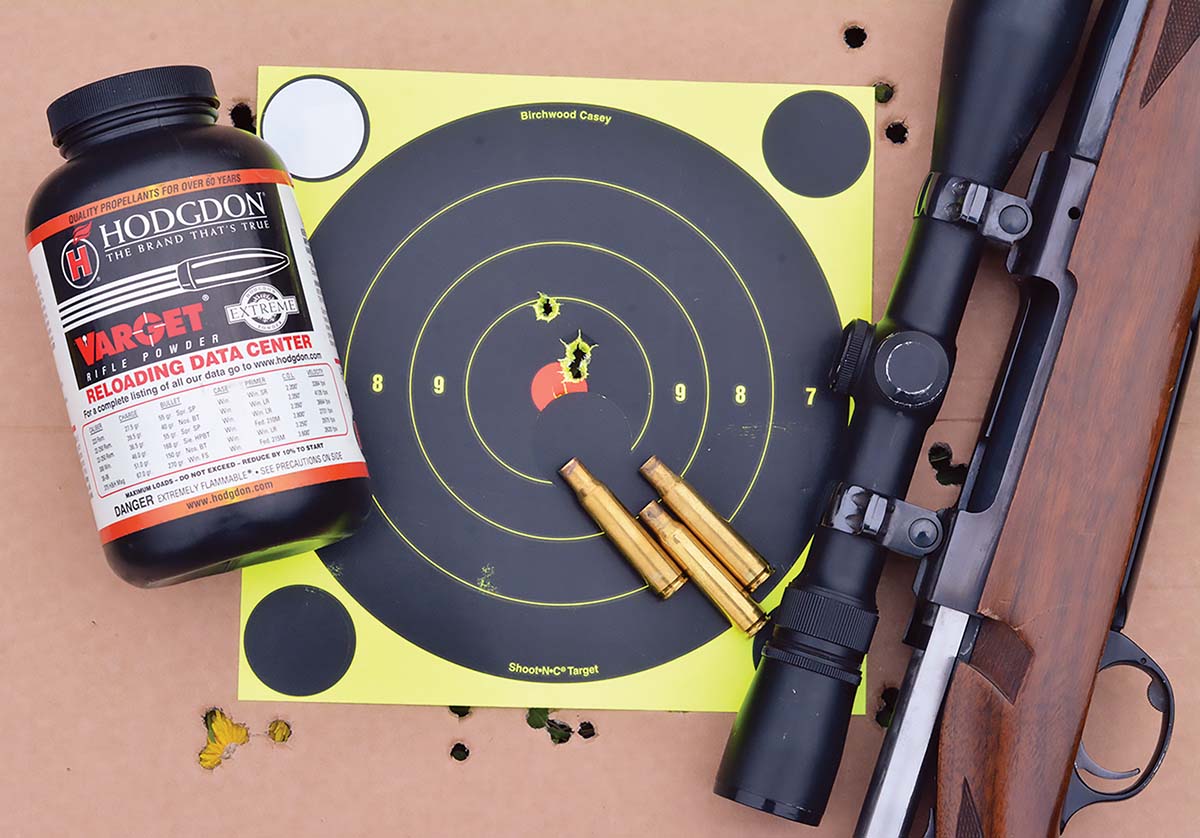
With careful load development, the 7x57 can produce respectable accuracy.
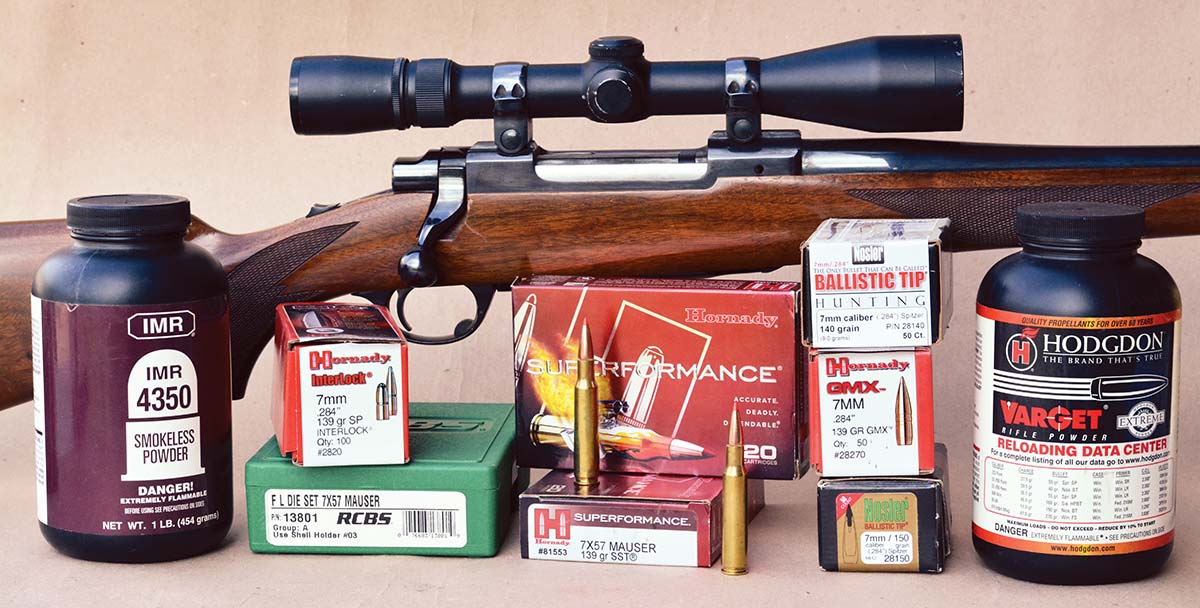












.jpg)
.jpg)
.jpg)


